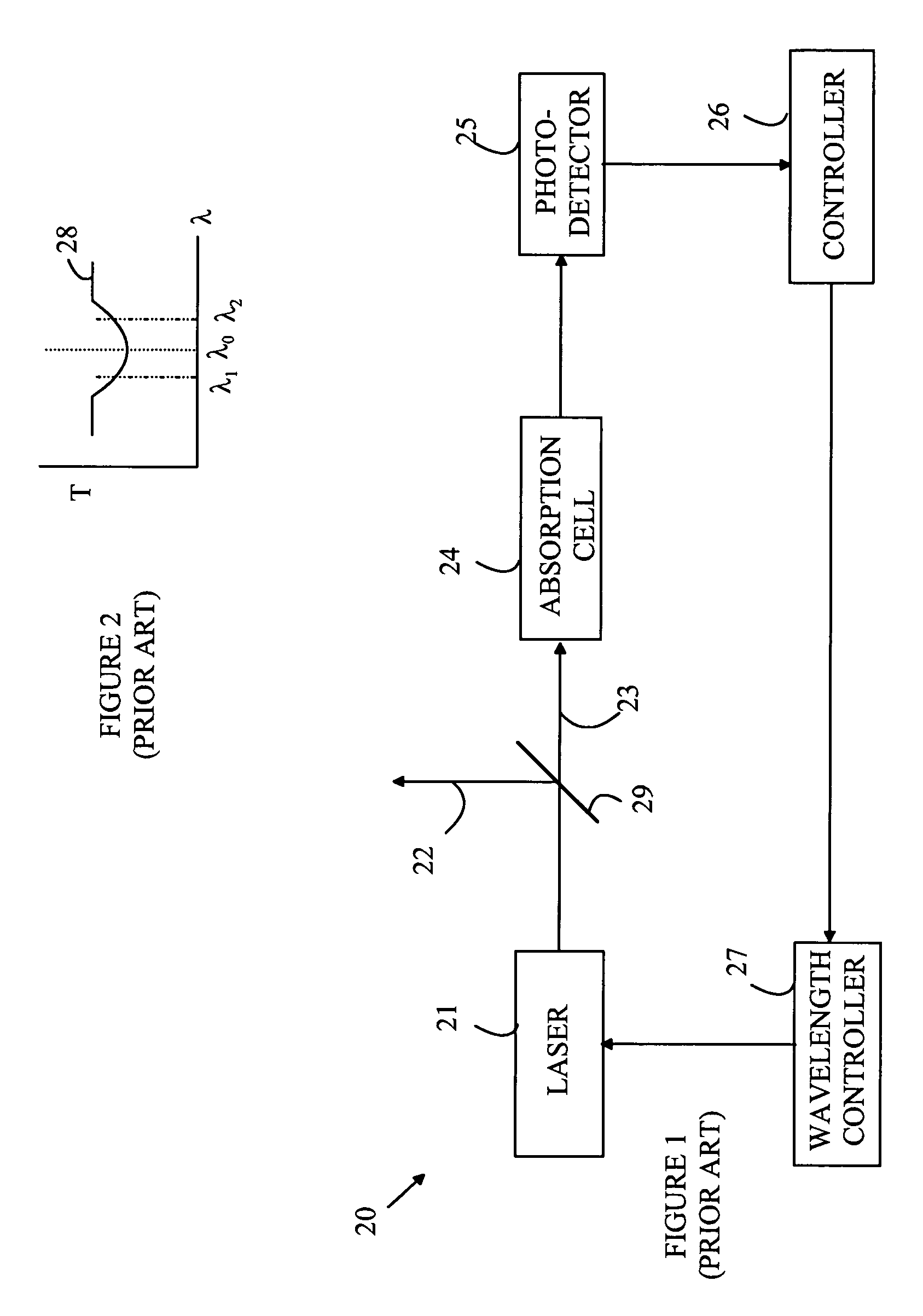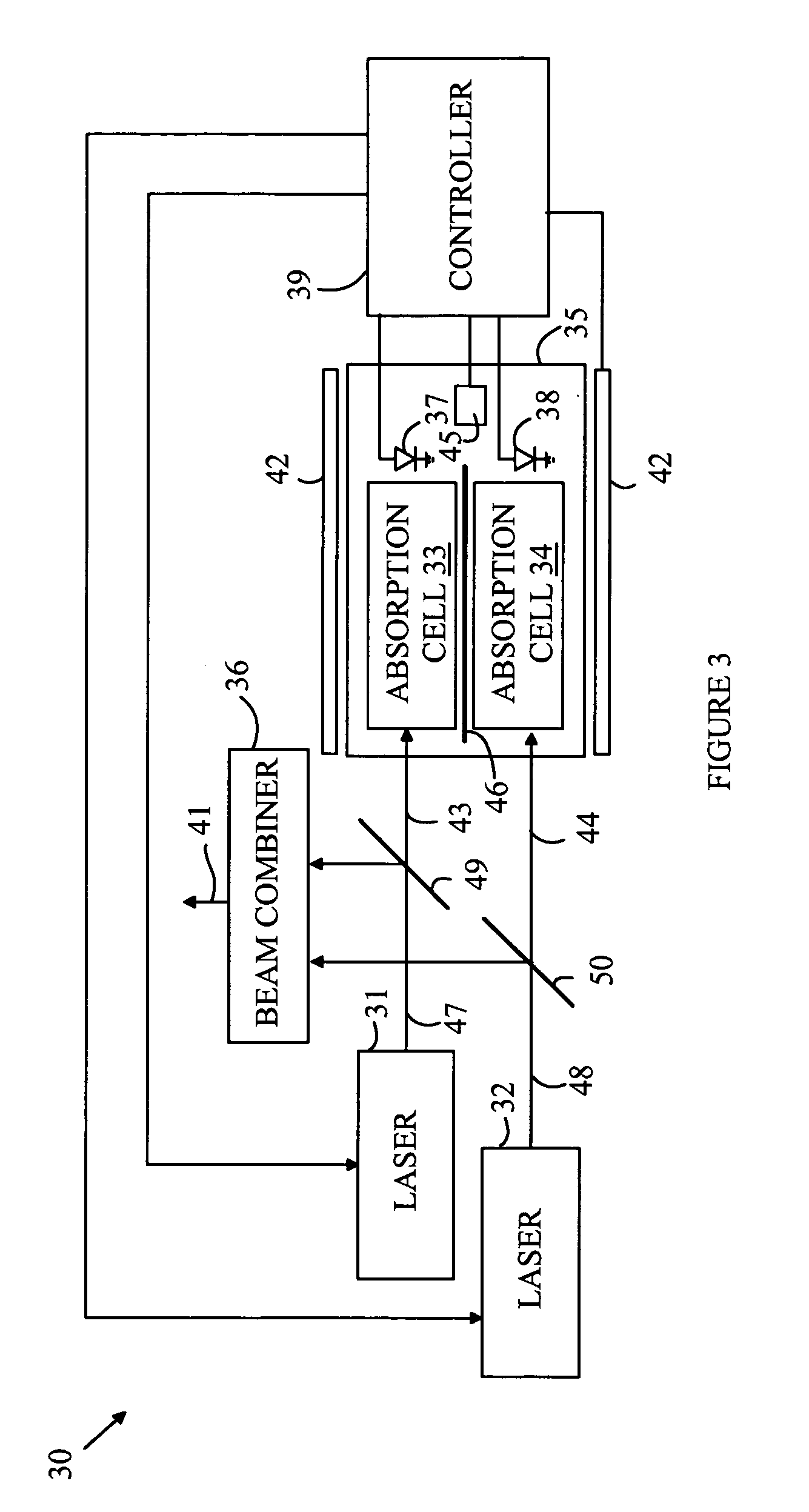Light source that utilizes small footprint reference gas cells for multiple laser frequency stabilization
a reference gas cell and laser frequency stabilization technology, applied in semiconductor lasers, laser cooling arrangements, laser details, etc., can solve the problems of servo mechanism, source emission spectrum too broad for many applications, limited power available from a single semiconductor laser, etc., to reduce temperature fluctuations and reduce differences.
- Summary
- Abstract
- Description
- Claims
- Application Information
AI Technical Summary
Benefits of technology
Problems solved by technology
Method used
Image
Examples
Embodiment Construction
[0020]The manner in which the present invention provides its advantages can be more easily understood with reference to FIGS. 1 and 2, which illustrate a typical prior art light source that utilizes a wavelength servo system. In the following discussions, the absorbent maximum is used as an example. But embodiments can also be constructed that utilize a local absorbent minimum. Light source 20 utilizes a laser 21 that has an output wavelength that can be controlled by appropriate signals to a wavelength controller 27. The output beam from laser 21 is split into two beams 22 and 23 by a beam splitter 29, the majority of the power being devoted to beam 22. Beam 23 is directed into an absorption cell 24 that contains an absorption gas having an absorption line centered at the desired wavelength, λ0. The intensity of the light in beam 23 after that beams passes through the absorption gas is detected by photodetector 25. The output of photodetector 25 as a function of wavelength is illus...
PUM
 Login to View More
Login to View More Abstract
Description
Claims
Application Information
 Login to View More
Login to View More - R&D
- Intellectual Property
- Life Sciences
- Materials
- Tech Scout
- Unparalleled Data Quality
- Higher Quality Content
- 60% Fewer Hallucinations
Browse by: Latest US Patents, China's latest patents, Technical Efficacy Thesaurus, Application Domain, Technology Topic, Popular Technical Reports.
© 2025 PatSnap. All rights reserved.Legal|Privacy policy|Modern Slavery Act Transparency Statement|Sitemap|About US| Contact US: help@patsnap.com



